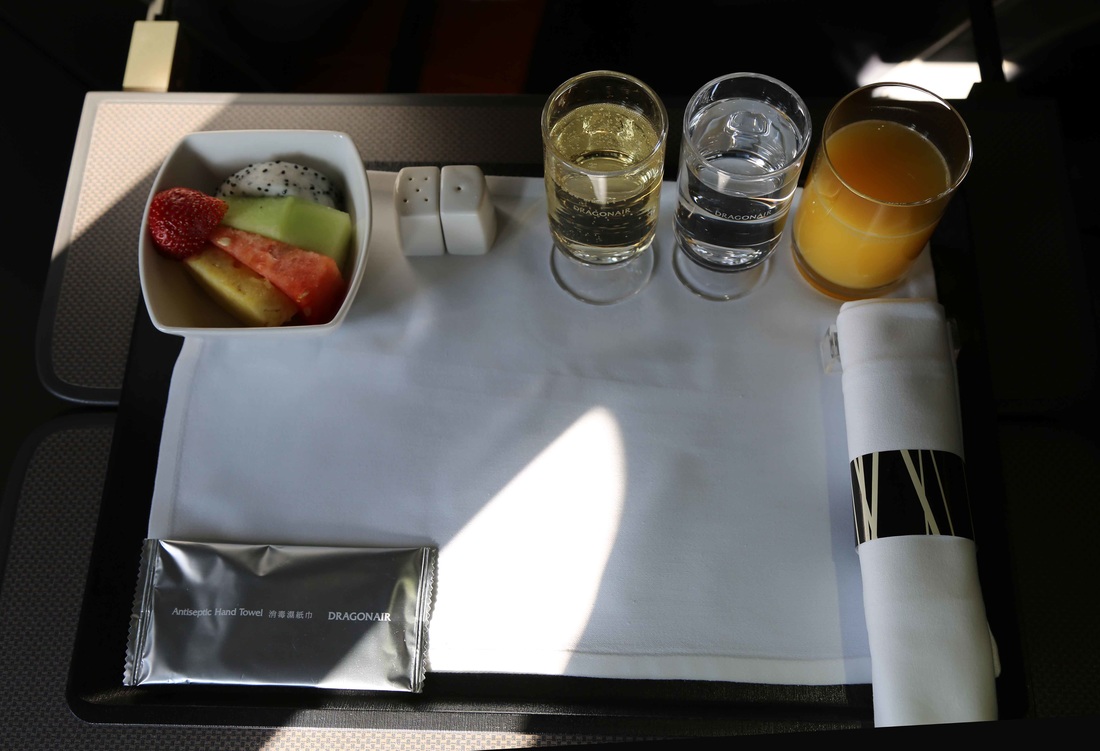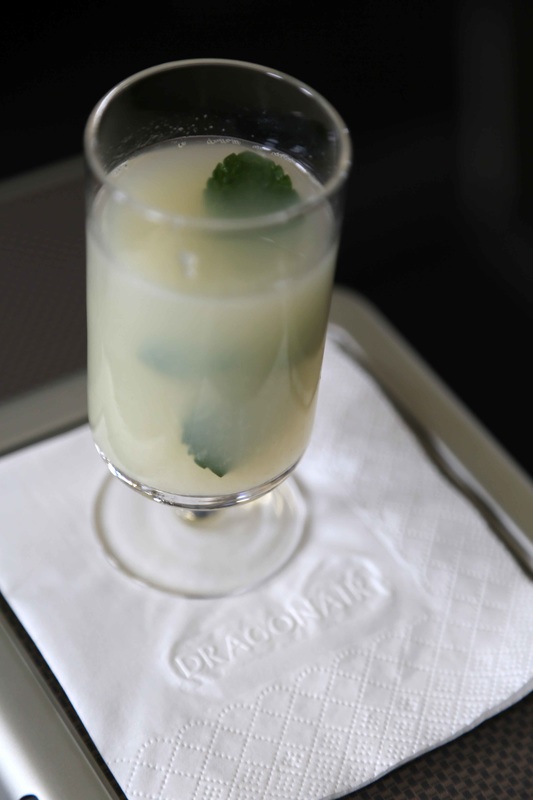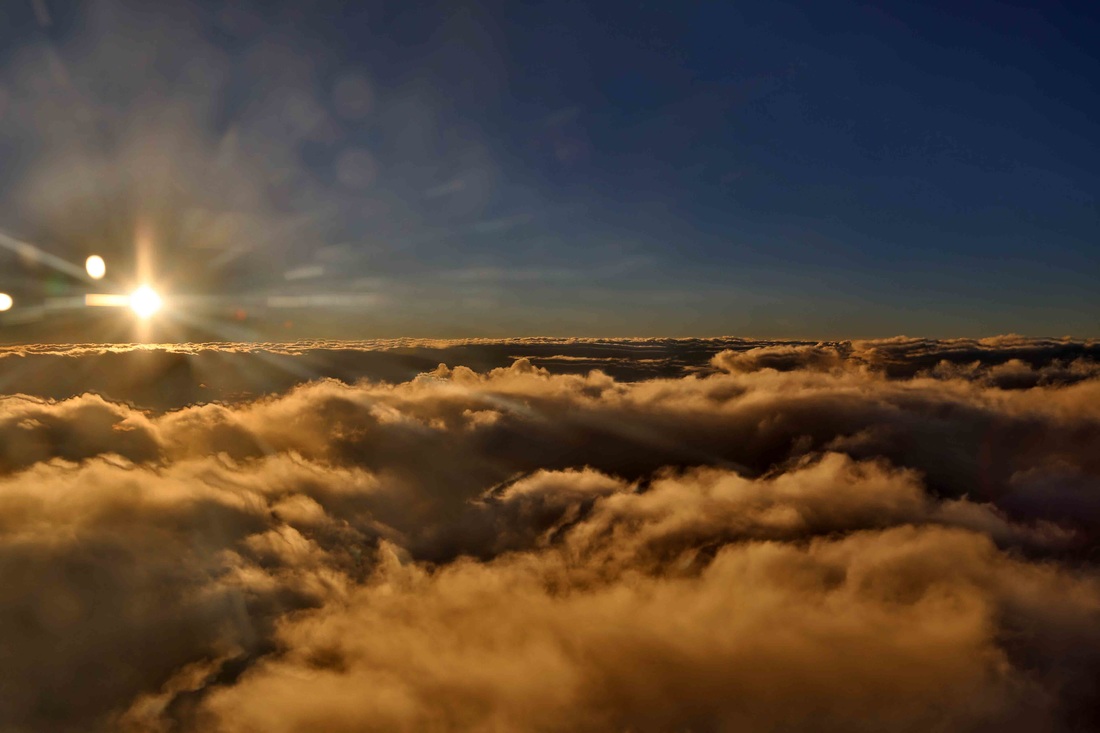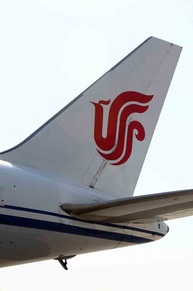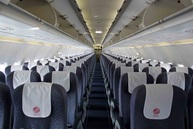|
Dragonair is an award-winning regional airline of Hong Kong, and is a proud wholly owned subsidiary of the Cathay Pacific Airways Group. Formed in May 1985, and having started services initially with just one Boeing 737-200 aircraft, Dragonair has in time become one of the world’s best regional airlines.
As a wholly owned subsidiary of Cathay Pacific Airways, the airline operates one of the youngest and most modern fleet with 36 aircraft on scheduled services to 41 destinations in Mainland China and elsewhere in Asia using three aircraft types: Airbus A330-330, Airbus A320-200, and the Airbus A321-200. The Airbus A330-300 aircraft come in three types of configuration: type 1 aircraft are designed to carry up to 284 passengers in three classes. They are used on the Beijing and Shanghai routes; type 2 aircraft are designed to carry up to 315 passengers in two classes. They are used on the Kaohsiung and Taipei routes; and type 3 aircraft are designed to carry up to 300 passengers in two classes. They are used on the Dhaka, Bengaluru (Bangalore), Taipei, Kaohsiung and Qingdao routes. In 2011, Dragonair was voted the ‘World’s Best Regional Airline’ by Skytrax for the second consecutive year. The airline is renowned as a China expert, serving 20 cities in mainland China. Cathay Pacific is a founding member of the Oneworld alliance, with its subsidiary, Dragonair, as an affiliate member. I had the pleasure of flying from Hong Kong to Hangzhou on Dragonair’s A321-200. I came in from Doha on Cathay Pacific flight CX640. Departure date and time of flight: February 2015, 08:00am Flight number: KA626 ATC Callsign: Dragon ICAO: HDA Flight duration: 2 hours and 20 minutes Cabin: BUSINESS CLASS Aircraft type: Airbus A321-200 (8 aircraft of this type in service.) Aircraft registration: B-HTI Aircraft Serial Number: 2021 First flight: 30th September 2003 Aircraft delivery date: 22nd October 2003 Aircraft engine types: Two x IAE V2533-A5 Frequent flyer programme: Marco Polo Club Seat configuration for this aircraft: 24 Business Class in a 2-2 configuration 148 Economy Class in a 3-3 configuration Punctuality of the flight/route taken: Departed on time, and landed on time as well. The short 2-hour flight provides a very non-scenic route from Hong Kong to Hangzhou because of the dusty and cloudy skies over China. The flight leaves Hong Kong, and goes over Guangdong, then over Xiamen and then straight down towards Hangzhou. Any baggage issues: As a Business Class passenger, the check-in baggage allowance is 30kg for one bag. On Cathay Pacific flights to, from, or via the US, Canada, and some countries in South America, 2 pieces of baggage may be checked-in with dimensions measuring up to 158cm (62 inches) in total and 32kg in weight for each bag. For all classes, each passenger (except an infant) can bring a free baggage allowance of one cabin bag not exceeding 56x36x23cm (22x14x9 in) in size. These dimensions include wheels, handles and side pockets. Comments on the check-in and any issues: No check-in issues as this was a connecting flight from Hong Kong (I had my luggage checked in at Dubai…so the luggage travelled from Dubai to Doha and then to Hong Kong and finally to Hangzhou!). In-flight magazine: Silkroad (published by ACP Magazines Asia Limited) Lounge experience at Hong Kong Airport: Once the plane landed at Hong Kong from my Cathay Pacific flight from Doha (CX640), I was whisked away by the waiting VIP security to the transfer security checkpoint, and then was ushered to the Cathay Pacific Airways Lounge near gate 65 known as The Pier. Cathay Pacific Airways and Dragonair have five lounges at Hong Kong Chep Lap Kok Airport for their First and Business Class passengers. They are: The Wing & The Pier The Pier, and The Wing are premium lounges in addition to The Cabin and The Arrival at the Hong Kong International Airport. Located at Level 5 near gates 62-66, The Pier covers over 3900m2, and provides another alternative for the First and Business Class passengers to relax and enjoy. Both lounges have separate facilities available for Business and First Class passengers, and both offer a personalised space in tranquil surroundings. These lounges are for the classy and the chic to while away their time away from the hustle & bustle of the airport. One of the unique features at The Pier is the addition of six Day-Break Rooms. Each offers an undisturbed environment to enjoy a little extra privacy. The Cabin (for departures) & The Arrival (for arrivals) In addition to The Wing and The Pier, The Cabin is the airlines newest departure lounge at Hong Kong International Airport, conveniently located near Gate 23 on the central concourse. Contemporary, refreshing, and dynamic, The Cabin is ultra-modern in design and introduces some brand new seating and dining concepts. Similar facilities as the other lounges are present at The Cabin. These include the IT Zone, The Deli (offering various Western and Asian hot and cold dishes), The Health bar (lovely freshly made smoothies, or Chinese herbal teas anyone?), and the The Arrival lounge is the airlines new premium arrivals lounge at the Hong Kong International Airport. Once passengers on Business and First Class arrive into Hong Kong, before they commence their activities in town, the lounge enables them to get refreshed and revitalised at the arrivals lounge. The Arrival lounge is located past the arrivals hall, at the centre passage connecting Terminal 1 and Terminal 2, right below the Airport Express station. All of the lounges can be accessed by First and Business Class passengers, Gold tier members or above of The Marco Polo Club and Emerald members of oneworld™ on Cathay Pacific or Dragonair arriving same day in Hong Kong OR transiting same day with more than 4 hours of transit time are welcomed to visit the arrivals lounge. G16 Lounge Managed by Dragonair staff and for those passengers that are connecting to Dragonair flights to/from Hong Kong airport, the G16 Lounge is located right opposite gate 16. The G16 lounge provides world-class facilities such as wireless and high-speed internet, plenty of high quality 5-star meals and drinks, and washrooms to freshen yourself before or after the flight. On my flight back from Doha (separate report) to Hong Kong, I was advised to use the G16 lounge because my connecting flight was with Dragonair to Hangzhou. Passengers flying with Cathay Pacific Airways can of course, also access the G16 lounge. From The Pier Lounge to gate 24, where the aircraft was parked took around 15 minutes. Hong Kong Airport was quite busy at this time in the afternoon. On the long-haul sector, such as this one, an average Business Class seat can cost anything in the range between US$4,500-US$6,600 depending on the destination, so considering the current economic climate, if the Business Class cabin is full then you can take a guess of how much money companies and people still have! Comments regarding the pre-meal service: Business Class passengers were offered a choice of champagne, orange juice, tomato juice, and apple juice out of a hand tray service provided by the crewmembers. A choice of either sparkling or still mineral water is also offered. There is a 500mL bottle of Evian water behind each Business Class seat. The signature drink to try is the ‘Dragon Sunrise’- a refreshing fusion of gin with fresh guava, and fresh lemon juice. All Business Class passengers are handed out hot hand towels just prior to the meal service. Comments regarding the meal: For such a short flight, there is only one meal service. I had ordered a special vegetarian meal prior to the flight. Dragonair offer scrumptious on-board menu choices that are changed every two weeks. Business Class passengers are presented with a neat meal tray. I got chicken biriyani with basmati rice and okra, which was very delicious. It was served with a couple of Indian parathas. Food is usually served on stylish china tableware specially adapted from the Lifestyle collection of Wedgwood from the UK. To enjoy the food at its freshest, it’s best to consume it before landing. To round of the meal service, we were served with Haagen Dazs ice-cream and a plate of fresh fruit. Comments regarding the drinks service: A second round of drinks was offered after the meal. This included coffee and tea (green tea and black tea). I ordered a cup of coffee; however by the time it was delivered the plane was in its decent into Hangzhou. The lovely crewmembers poured the coffee into a wide-sided plastic cup so it would not be so hot, but just lukewarm enough to drink. Should any passenger want wine or champagne (even if it is the morning!), then these drinks are served in exclusively designed glassware. The champagne is provided by the award-winning Piper-Heidsieck Brut. The wine list for this flight included: White Wines: Macon Villages Blanc, Vaucher Pere & Fils, Burgundy 2010, France Wente Morning Fog Chardonnay, Livermore Valley & San Francisco, California 201, U.S.A. Red Wines: Cotes de Duras, Baron de Venzac 2012, France Luis Felipe Edwards, Family Selection, Gran Reserva, Shiraz 2012, Chile. Some of the specialties on Dragonair include: Fook Ming Tong Chinese tea, Fujian oolong tea, Hong Kong style milk tea, Fuding jasmine silver fur tea, and freshly brewed coffee. Comments on the in-flight system (if any): Overhead TVs are located throughout the aircraft in both cabins. The music played upon boarding and disembarking the aircraft is changed every month. On this flight we had ‘Hero’ by Andy Findon (on-boarding), and ‘Tsubame Ni Naritai’ by Chen Min. All aircraft have the Airbus KID 110V AC SkyPower in-seat power outlet for laptop computer and portable electronic devices in every seat. This requires no adapter cable. Dragonair was the first airline to offer this technology within the operational network for mainland China. Comments of professionalism of the cabin crew: The staff are very proud of their brand image and represented their airline at the highest level possible. When under a situation of high pressure, the staff seemed to act with professionalism and integrity. The cabin crew uniform design consists of a black blouse with thin red stripes, and a neck silk scarf in navy blue and red colours. Dragonair's current uniforms are designed by renowned Hong Kong designer, Eddie Lau. Comments on the interior of the aircraft (including seat comfort): For A321-200 on which I was flying, the Business Class cabin accommodates 24 passengers in a 2-2 seat design while Economy Class cabin caters for 148 passengers in a 3-3 setting. The seats in Economy Class on the Airbus A321-200 have a pitch of 32” recline, and are 17.5” wide. The seats in Business and Economy Class are manufactured by various suppliers: BE aerospace, Zodiac France, Geven aircraft seating, Recaro Aircraft Seating, while those in first Class are manufactured by Zodiac. Business Class seats on the Airbus A321-200 have a pitch of 42” recline, and are 20.5” wide. Each seat has an extendable leg rest, and a footrest, as well as a six-way adjustable headrest. The Business Class seat is ergonomically designed to be comfortable whether the passenger is working or relaxing. The Business Class cabin is upholstered in a refreshing and contemporary aqua blue; while the Economy Class is upholstered in shades of aqua blue, imperial red, and sky blue. Dragonair logo and brand livery Dragonair’s livery consists of having an all white fuselage, and underbelly. The tailfin consists of an imperial red dragon against a white background, and the same design is applied to the engines. At the front of the fuselage, just before the first cabin door, and below the cabin windows the words ‘DRAGONAIR’ are printed in English, in black ink and in capital letters; while the Chinese equivalent is printed in imperial red ink, and above the cabin windows (above the English words). The tips of the wings are coloured in imperial red ink. Below the tailfin, just in front of the back cabin door, is the flag of the Swire Group. The current Dragonair logo, modified from the previous version, was introduced in 1993 coinciding with the delivery of Dragonair's new fleet of Airbus A320s back then, with a new livery. The livery design gives a streamlined and contemporary look that reflects the dynamism and energy of the airline. Aircraft are given a pristine, overall white look, with the Dragonair name in clean black lettering. Red is used in the Chinese version of the name and in the dragon motif, in a strong and sophisticated shade. While Dragonair has been a wholly owned by the Cathay Pacific Group since September 2006, the airline continues to operate as a separate airline under its own Air Operator’s Certificate. The Dragonair brand remains unchanged and the airline’s own 2,400 staff consisting of cockpit and cabin crew fly its own aircraft in the existing livery. In 2010, Dragonair celebrated its 25th anniversary, and to mark the auspicious occasion, an Airbus A330-300 was painted in a special livery with the red dragon painted across the whole fuselage against a backdrop of Hong Kong’s skyline in green. Just under the cockpit windows it writes ‘Hong Kong’ in capital letters, and there is a painting of the famous Hong Kong Star Ferry. Overall rating 1-10 (worst-best): 10 Comments are closed.
|
About Airline PRThis is a special section on Airline Branding, and Airline Public Relations written by me on all the flights I have been fortunate enough to have been on. These are not records taken from somewhere else, but are actual flights I have been on. Most of the flight trips are officially sponsored by the airline companies in order to promote their certain routes, and aircraft. Airline promotion and PR related work in the aviation industry is one of my expertise. Watch exclusive videos below taken in the cockpit of a Boeing 777-300ER in-flight over Chinese Airspace.
Special thanks goes to Turkish Airlines B777-300ER Cockpit Video 1B777-300ER Cockpit Video 2Archives
February 2024
Airlines Reviewed
All
Proud media partner of QATAR AIRWAYS |


